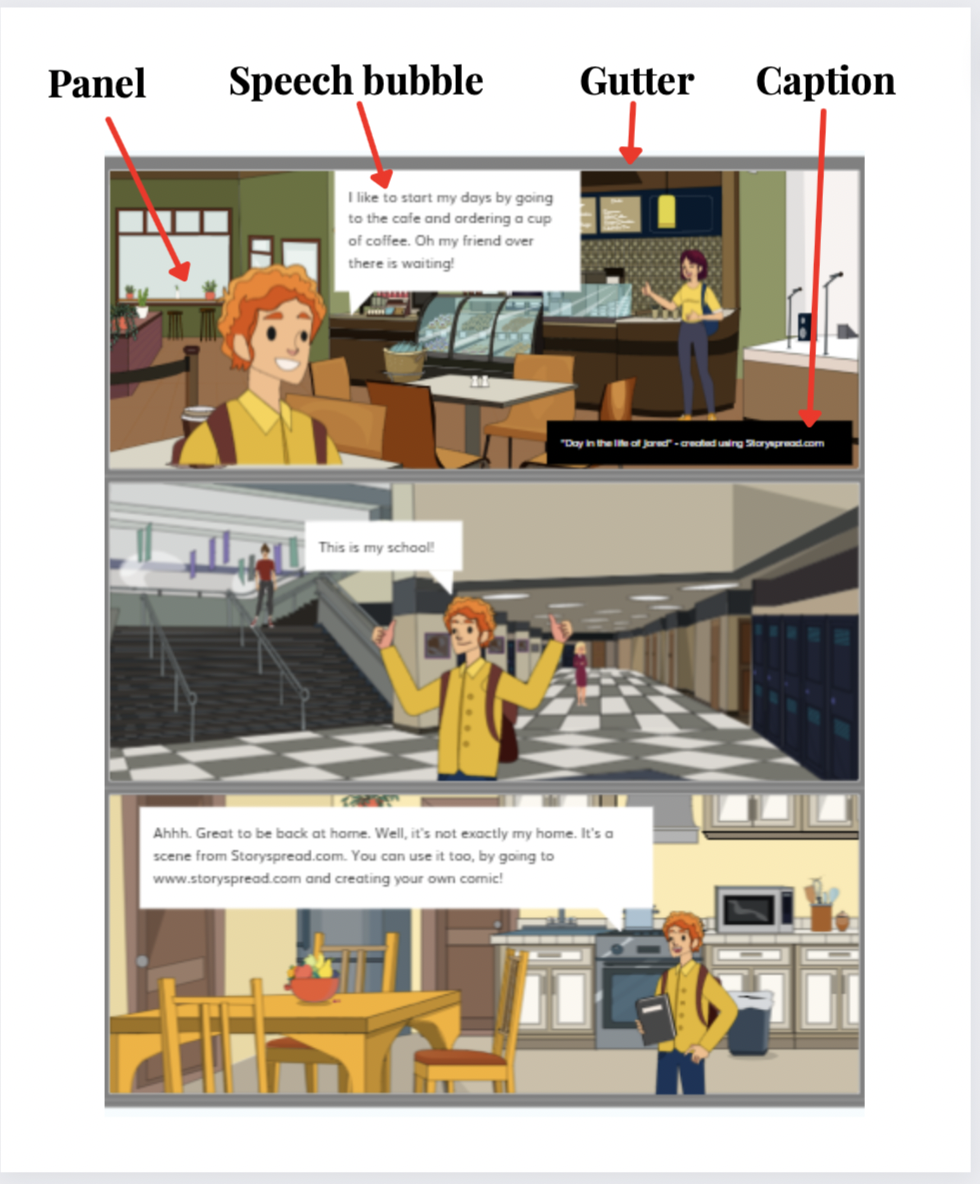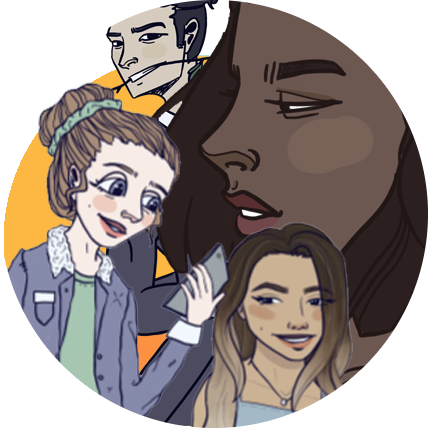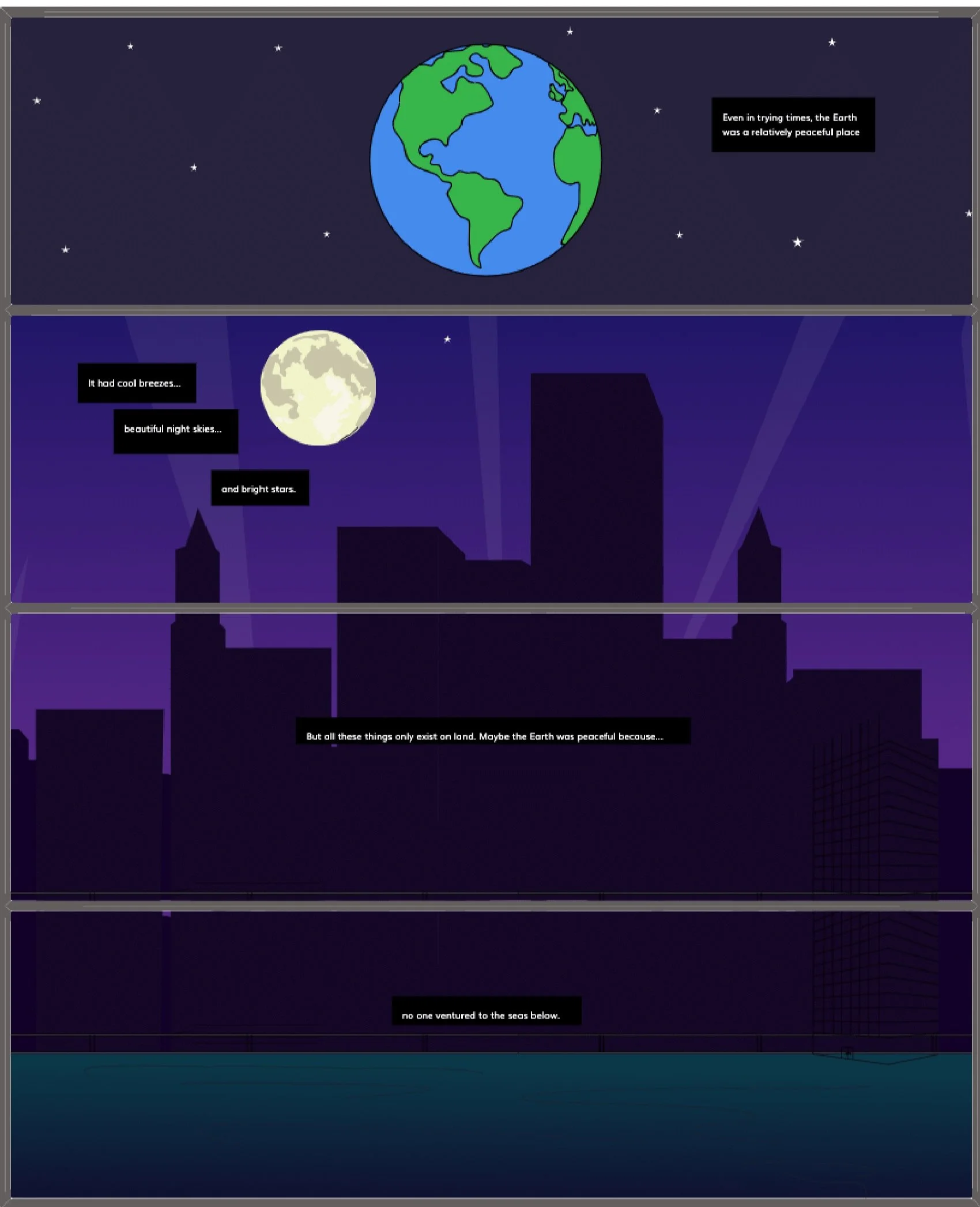Elements of a Comic Book: How to Structure Your Comic Book Layout
Did you know the layout of your comic book can impact how your readers visualize & consume your story?
A great comic book will hook your readers with a balanced comic layout, flow, and structure. To create an engaging composition, consider all the comic book elements and how you can use them to enhance your story and create a visually stimulating layout for your reader.
Let’s look at all the different elements and review how to create a layout that elevates your story and engages your reader.
Panel
The panel refers to the border outline that encapsulates a single scene or frame in your comic book. Panels are a fundamental element of a comic book layout and are used to portray one complete thought or idea in one shot, separating scenes into sections.
They also help the reader break down the story and follow your storyline. When creating your panels, think about what you want to convey to the reader and how you want to develop your story using different panel shots.
For example, your panel could have a close-up shot of an object, indicating the object as important/valuable to the story or, it could have a distant shot establishing or setting the scene.
When creating your panels, think about how many independent thoughts you need to include to tell your story, and how you want to lay it out for the reader
🔥 HOT TIP🔥
If you want to give your reader a surprising plot twist, leave significant clues in plain sight! Having items lying around in wide shots can help foreshadow an upcoming event.
Captions
Use captions to narrate your comic book and give more description to the reader of what is happening in the scene. Typically, captions will be in a colored outlined rectangle box within the comic.
Captions are not the same as thought or speech bubbles (we will cover more about those in the next section). Captions will have a different tone compared to character dialogue, which helps separate them from other text within the comic.
For example, your caption could be within your panel in a colored rectangle box with more formal text. The tone is descriptive - differing from the conversational tone your characters use in their dialogue.
Captions help enhance your story because they can clarify to the reader what is to be expected in the frame and set the scene.
🔥 HOT TIP🔥
If you want to give your reader clarity on a change happening in the story, use a caption box! Keep all your caption boxes the same color & stick to the same tone when narrating the story. This will help your reader differentiate between the narrator & character dialogue.
Speech and thought bubbles
Speech and thought bubbles indicate character dialogue or thoughts. They are an important element to your comic book layout because they help give tone, voice, and personality to your character(s).
You can use the speech bubbles to indicate that your character is speaking openly or conversing with other characters in the story. Thought bubbles convey emotions, feelings, and expressions unsaid by the character(s).
For example: Use a speech bubble to indicate character dialogue, and use the thought bubble to give your reader insight into what the character is actually thinking.
Both speech and thought bubbles are important elements because it creates an engaging format for your reader. You can give more depth to characters and express foreshadowing through characters' unvoiced thoughts..
🔥HOT TIP 🔥
Consider the text ratios inside speech bubbles & the distance between them. Use variations of speech bubbles to portray characters' emotions. Use widely spaced speech bubbles to suggest a long pause & longer text within one small text box to suggest the character is rambling.
Sound effects
Sound effects are a great way to make your comic book story more expressive and depict vivid scenes happening within the plot. Sound effects in comic books will usually appear in a large bold text, be outside a text box, and portray sounds commonly known as onomatopoeias (words that sound like what they describe.)
For example, common onomatopoeias that you will see are words like DING-DONG, WHAM, BOING, BAM, WHACK, WHOOSH, DRIP, SLAP.
Using sound effects throughout your comic helps emphasize events, actions, and sounds happening within the scene. They are a powerful element that can help your reader visualize, feel, or hear what's happening in the comic book, making it more realistic.
🔥HOT TIP🔥
If you have an action scene happening in your comic book, insert onomatopeias into the panel in large, bold text so readers can feel the excitement - Water sounds: Drip, Splash. Vocal sounds: Whimper, growl. Collison sounds: Thump, Smash. Air sounds: Whiz, Swoosh.
Gutters
Gutters refer to the white space between two panels within a comic book. They are important because they bring closure to one scene and help transition to the next. Without them, your image would appear as one continuous shot and bring no closure to the scene.
Gutters also force the reader to come up with their own conclusion on how some scenes end.
For example, if one panel depicts an action scene between two characters but the next panel shows a distant shot of an onomatopoeia BAM, SMACK, AND WOOSH, the reader must use their imagination to envision the scene.
🔥HOT TIP🔥
Create suspense in your story by using gutters to separate scenes that do not have a clear ending. This creates curiosity in the reader and encourages them to keep reading to see what happens next.
Using all the comic book elements in your comics layout
As you can see, including all these comic book elements in your story can help you create an enriching comic that is engaging, evokes emotion, and hooks your reader.
All these elements play a strategic role in a comic book layout and can help you create a vivid, expressive comic that pulls the reader into your story.
Now that you know how to create a great comic book layout, check out our article, “The Difference Between Comic Books, Comic Strips, and Graphic Novels,” to help you pick a format that works best for your story.
And when you are ready to bring your story to life, consider using Storyspread interactive software. Our comic creation online is easy and fun to use with simple drag-and-drop features (no drawing required!)
With various templates to choose from, create a comic book with different settings, characters, and objects to bring your story to life. With our built-in text features, you can create a dialogue between characters and add captions to tell your story.
Hi, Welcome to Storyspread.com!
Comic creation made simple. Create graphic novels with a single click. Add character, backgrounds, and more.
Easy to use. Say goodbye to searching far & wide for an expensive illustrator.
Tell your story. Join other creatives, readers, and hobbyist in producing high quality & beautiful comics
Read. Read other’s comics for FREE and share with others
Grow. Grow an audience you love with the stories YOU imagined
Were you can create a comic and graphic novel WITHOUT drawing. Simple and easy! Made for all skill levels. Click-n-drag comic book characters, scences into panels.
Create a comic just like this! Here.





